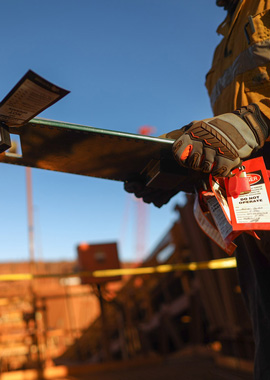Mining health and safety
Mining health and safety
Mining health and safety professionals identify hazards, assess risks, apply safety controls, provide advice on accident prevention and occupational health, and are involved in developing a safe and healthy workplace culture.
Key tasks
- Promote occupational health and safety, and develop safer and healthier ways of working through developing policies, procedures and systems
- Ensure compliance with all health and safety legislation in relation to equipment and workplace activities
- Investigate accidents and unsafe working conditions, study possible causes and recommend remedial actions
- Develop and implement training modules on health and safety practices and legislation
- Support a company’s emergency preparedness through developing and coordinating emergency procedures, mine rescue teams, fire fighting and first aid crews
- Communicate frequently with management to report on the status of the health and safety strategy and risk management strategy.
Skills and attributes
- Highly developed communication skills
- Attention to detail
- Working as part of a multidisciplinary team
- Ability to sort and consolidate information
- Leadership and decision-making
A typical day
- Mining health and safety professionals employed on-site work similar hours to other mine-site professionals. They often work directly with others to gather information to help develop plans, processes and strategies.
Role types
- Occupational Health and Safety Officer: Inspect and test equipment, ensure safe work practices (including appropriate use of personal protective equipment) and work areas, conduct staff training, identify potential accident and health hazards and help design and implement health and safety control measures.
- Occupational Health and Safety Auditor: May be an external consultant or internal staff member with formal qualifications or equivalent industrial experience in auditing who gather evidence that occupational health and safety (OHS) procedures are being implemented.
- Hygienist: Identify and investigate problems of occupational/industrial hygiene (chemical, physical and biological hazards) in the workplace.
- Risk Manager: Generate strategic guidelines and design parameters for business activities to manage the significant OHS threats in an operating site.
- Mine Inspector: Professionals with statutory positions that conduct on-site inspections or investigations of mines in search of potentially hazardous conditions; investigate accidents and disasters, and work to identify their cause.
Nature of work
- Fly-in/fly-out (FIFO) work may be required
- Alongside usual roster, there is potential for an on-call component for responding to major incidents
Travel
- Travel is highly likely depending on the role, especially to remote operations
